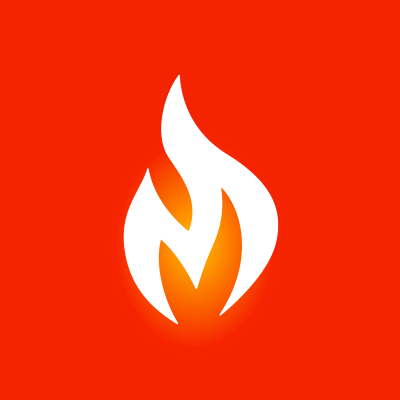Table of Contents
- What is an open‑source dashboard?
- Open source dashboard tools at a glance
- Key Takeaways
- 1. MetricFire
- 2. Grafana
- 3. Kibana
- 4. Freeboard
- 5. Mozaïk
- 6. Dashbuilder
- 7. Redash
- 8. Tipboard
- 9. Smashing
- How to choose an open source dashboard (5‑step checklist)
- FAQs
- Want OSS power without the upkeep?
- Final Thoughts
Looking for the best open source dashboards for metrics, logs, or IoT? Below is a quick comparison of leading options: Grafana, Kibana, Freeboard, Mozaïk, Dashbuilder, Redash, Tipboard, and Smashing with strengths, gaps, and ideal use cases.
What is an open‑source dashboard?
An open‑source dashboard is a self‑hosted, extensible UI for visualizing metrics, logs, and other data without license fees. These tools let you customize, integrate, and scale dashboards to your stack.
Open source dashboard tools at a glance
| Project | Best for | Data sources | Setup effort | License | Notable gaps |
|---|---|---|---|---|---|
| Grafana | Multi‑source infra metrics | Prometheus, Graphite, Elastic, SQL | Medium | AGPLv3 | Advanced RBAC in paid tiers |
| Kibana | Logs/events in Elasticsearch | Elasticsearch | Medium | SSPL/Elastic License | Elastic‑only; less ideal for non‑log metrics |
| Freeboard | IoT/status boards | Web APIs, MQTT | Low | MIT | Limited alerting/scale |
| Mozaïk | Custom JS dashboards | Node/React widgets | Medium | MIT | Requires coding; smaller community |
| Dashbuilder | Visual, non‑technical users | CSV, REST, structured data | Medium | Apache‑2.0 | Less developer‑oriented |
| Redash | SQL analytics | Postgres, BigQuery, Redshift… | Low | BSD | Not for real‑time observability |
| Tipboard | TV wallboards | HTTP API, YAML | Low | Apache‑2.0 | Older Python baseline; security limits |
| Smashing | Simple status boards | Ruby widgets | Low | MIT | No persistence/alerting |
In today’s digital operations, dashboards aren’t just nice-to-haves; they’re essential. Teams across engineering, product, operations, and business intelligence rely on real-time data visibility to monitor systems, analyze trends, and catch anomalies before they escalate. For many organizations, open-source dashboard tools offer the best combination of flexibility, transparency, and cost-efficiency.
This guide explores the top open-source dashboard solutions in 2026, including their strengths, best use cases, and real-world insights, along with an honest evaluation of their limitations. Whether you're just starting out or scaling your observability stack, this article will help you choose the best fit for your team.
Key Takeaways
-
Grafana is the most powerful and extensible open-source dashboard tool, but it does require setup and maintenance.
-
MetricFire offers the easiest path to production-ready Grafana dashboards. It can automatically visualize certain metric types to add pre-made dashboards, requires no manual configuration and no infrastructure headaches.
-
Tools like Freeboard, Mozaïk, and Smashing offer niche benefits (e.g., IoT, wall displays) but may fall short for complex monitoring needs.
-
Redash and Kibana are best suited for analytics and log data, not real-time system observability.
-
When choosing a dashboard tool, evaluate:
-
What type of data you need to visualize (metrics, logs, APIs).
-
Who will be using the dashboard (developers, business users, ops)
-
How much time and expertise can be dedicated to setup and maintenance
-
Use MetricFire's Hosted Graphite platform to analyze your system's performance and troubleshoot errors. Book a demo with our team for more detailed information about MetricFire and how to integrate it with your system. Sign up for a MetricFire free trial to get started with hosted Grafana dashboards.
1. MetricFire
Summary: A commercial-grade, hosted monitoring and dashboard platform built on open-source tools like Graphite and Grafana. MetricFire adds reliability, scalability, and support to help teams move faster.
Best for: Teams that want the power of open source without the burden of infrastructure management and with a low barrier to entry at an affordable price point.
Highlights:
-
Fully managed Grafana dashboards with hosted Graphite time-series databases and a Dashboard Library that adds pre-made dashboards when certain metric types are detected.
-
Custom alerting, team collaboration, and real-time monitoring out of the box.
-
Expert support from observability engineers; ideal for teams without a team of full-time DevOps Engineers.
-
Integrated with modern DevOps workflows and integrations: Terraform, Kubernetes, AWS, Heroku and more.
2. Grafana
Summary: Grafana, the industry standard for open-source monitoring dashboards, is mature, powerful, and widely supported.
Best for: Teams needing customizable dashboards across multiple data sources.
Highlights:
-
Connects to Prometheus, Graphite, InfluxDB, Elasticsearch, MySQL, and dozens more.
-
Advanced visualization options, alerting, and a thriving plugin ecosystem.
-
Strong authentication and team management features in Grafana Enterprise.
Drawbacks:
-
Requires configuration to unlock full potential.
-
Some enterprise features are gated behind paid tiers.
Expert Tip: Grafana is the underlying engine for many commercial observability platforms. Use open-source Grafana if you have the in-house skill to manage it—otherwise, consider a managed service like MetricFire Grafana dashboards.
3. Kibana
Summary: The visualization layer for the Elastic Stack, Kibana, is purpose-built for analyzing and searching log and event data.
Best for: Elasticsearch users who need deep exploration of log or event data.
Highlights:
- Powerful time-series visualizations and dashboards.
- Full-text search and anomaly detection.
- Machine learning features are included in the paid Elastic license.
Drawbacks:
- Locked into Elasticsearch.
- Not ideal for non-log monitoring use cases.
4. Freeboard
Summary: A lightweight dashboard builder ideal for IoT and small-scale real-time applications.
Best for: Simple dashboards for device monitoring or public displays.
Highlights:
-
Drag-and-drop UI, no backend required.
-
Visualizes data from web APIs, MQTT, or custom endpoints.
-
Licensed under MIT for full flexibility.
Drawbacks:
-
Not built for complex metric pipelines or large data sets.
-
Development and support have slowed in recent years.
5. Mozaïk
Summary: A modern, JavaScript-based dashboard tool for real-time applications.
Best for: Developers wanting to build stylish dashboards with full control over layout and data integration.
Highlights:
-
Built on Node.js, React, and D3.
-
WebSocket support for live data updates.
-
Modular widget system and themes.
Drawbacks:
-
Requires coding knowledge.
-
Small community compared to Grafana.
6. Dashbuilder
Summary: A visual dashboard authoring platform for business and non-technical users.
Best for: Enterprise environments needing visual tools to build dashboards from multiple sources.
Highlights:
-
Drag-and-drop interface.
-
Works with structured data sets, CSV, and REST APIs.
-
Apache v2.0 license—fully open source.
Drawbacks:
-
Setup is not as intuitive as cloud-native tools.
-
Less developer-oriented; limited widget library.
7. Redash
Summary: A query-focused dashboard tool designed for analysts and data scientists.
Best for: SQL users who need to create shareable visualizations quickly.
Highlights:
-
Connects to over 20 data sources like PostgreSQL, BigQuery, and Redshift.
-
Collaborative workspace for teams.
-
Schedule reports and share dashboards.
Drawbacks:
-
Not optimized for real-time observability metrics.
-
Advanced visualizations are limited.
8. Tipboard
Summary: A Python-based dashboard framework designed to push business metrics to TVs and wallboards.
Best for: Office displays showing key KPIs.
Highlights:
-
Simple YAML config and HTTP API for data updates.
-
Widgets for text, charts, and status indicators.
Drawbacks:
-
Currently supports only Python 2.7, which is deprecated.
-
Limited security and scalability features.
9. Smashing
Summary: A fork of Shopify’s original Dashing project, Smashing offers elegant, Sinatra-powered dashboards for basic data display.
Best for: Personal projects or teams needing simple metric displays.
Highlights:
-
Lightweight and visually appealing.
-
Works well for status boards, weather data, or CI/CD summaries.
Drawbacks:
-
No built-in data persistence or alerting.
-
Minimal active development.
How to choose an open source dashboard (5‑step checklist)
- Data type: metrics, logs/events, or SQL analytics.
- Volume & freshness: cardinality, retention, and refresh needs.
- Access & sharing: SSO, RBAC, and permissions.
- Plugins & integrations: data sources, alerting, templating.
- Hosting & maintenance: self‑host vs. managed service.
FAQs
Q1. What is an open source dashboard?
A UI for visualizing data—often metrics, logs, or SQL—built on an open-source project you can self-host or extend.
Q2. Which open source dashboard is best for metrics?
Grafana is the most flexible for multi-source metrics and alerts; pair with Prometheus or Graphite (see related guide).
Q3. When should I choose Kibana instead?
If your primary data lives in Elasticsearch (logs/events), Kibana excels at search and drill-down.
Q4. Are lightweight IoT/status-board options available?
Yes, Freeboard, Mozaïk, and Smashing are simple for wallboards but lack deep alerting/scale.
Q5. What if I don’t want to run the stack myself?
Use a managed Grafana service to skip setup/maintenance while keeping OSS flexibility.
Want OSS power without the upkeep?
Final Thoughts
If you’re evaluating open-source dashboard tools in 2026, Grafana remains the gold standard for flexibility, power, and visualization quality. But deploying and managing it yourself, especially with custom data sources or at scale, can quickly become a drain on engineering time.
That’s where MetricFire stands out.
MetricFire is the fastest and easiest way to get Grafana dashboards up and running automatically, no matter what metrics you’re sending. Whether you're pushing system metrics, business KPIs, or application telemetry, MetricFire automatically ingests your data, applies pre-built visualizations, and gives you production-ready dashboards—without requiring any setup or maintenance on your end.
For teams that need the sophistication of Grafana without the operational overhead, MetricFire delivers enterprise-grade monitoring and alerting as a turnkey service. It’s ideal for SaaS companies, fast-growing startups, and teams without full-time DevOps resources.
Other tools like Redash, Mozaïk, or Kibana can shine in more niche scenarios—such as SQL analytics or log exploration—but they often lack the real-time visibility and flexibility that Grafana-based solutions provide.
Bottom line: If you want the power of Grafana without the hassle, MetricFire is a practical, production-ready choice.



